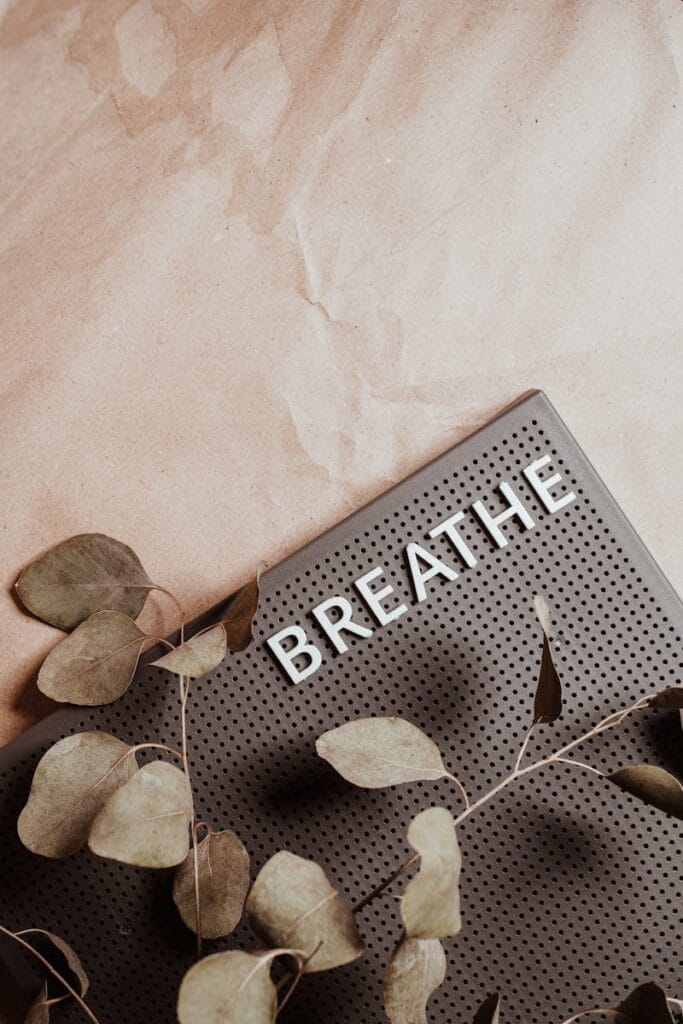
Coherent or Resonance Breathing
You have many internal rhythms.
Rhythms exist all over your body. You heart beats with a certain pattern. You breathe a certain way and muscles often move with a rhythm. Your stomach and intestines pulsate to digest your food. Your spinal and cerebral fluids flow. Inside your body, many systems move to do the work they’ve evolved to do. When these different rhythms start to have a coordinating pattern, your body relaxes from the inside. Coherent or resonance breathing is slow breathing at a 10 – 12 second breath cycle (5 or 6 second inhale and 5 or 6 second exhale). With coherent or resonance breathing, your bodily rhythms start to sync up with each other. Your blood pressure and your heart rate start to happen in sync, along with your brain neural oscillations. This pattern is soothing for your body.
I feel calmer when I breathe slower.
At the beginning of the pandemic in 2020, I was introduced to a 6 second inhale and 6 second exhale virtual class. I would come to the class and we would breathe to the sounds of a click (inhaling for 6 seconds, exhaling for 6 seconds) for 25-30 minutes each week. I found it really soothing and helpful for me, particularly with all the craziness of the pandemic. The class was inspired by the work of Dr. Richard Brown and Dr. Patricia Gerbarg and their 2012 book, the healing power of the breath. By connecting to and increasing the awareness of our body through our breath, we can help the body relax. When the body relaxes, recovery and healing happens.
Coherent or resonance breathing helps your brain.
While I am well aware of the power of the breath, I continue to learn more about the depth of it’s potential. This spring, I listened to a podcast with Dr. Mark Allen, who founded Cognitive FX, a center which treats people with treatment resistant traumatic brain injuries. They find that 15 minutes or more of coherence breathing daily can be helpful for those struggling with side effects of a brain concussion.
A science literature review in 2024 in Communications Biology, Dynamic mechanisms that couple the brain and breathing to the external environment, highlights a couple mechanisms that could explain why oscillations in the breathing are linked to oscillations in neural activity, arousal, and cognitive function. The body systems want to be in harmony with each other and if possible with the external environment. External stimuli such as completing repetitive tasks and listening to music also influence the rhythm of our internal oscillations.
Slow breathing benefits your body in many ways.
I recently came across this 2022 article, Heart rate variability and slow-paced breathing: when coherence meets resonance, published by a German and French team reviews the benefits and looks at the underlying mechanisms of the understood benefits slow breathing. The benefits result from our breathing’s impact on the nervous system. The benefits include reduction of cardiac events, hypertension (high blood pressure), muscle frailty, and inflammation. Brain modification during slow paced breathing trigger improvements in awareness, cognition, and stress management. All of these are good things. And you don’t need to buy any pills or devices to receive them. Simply take a few minutes wherever you are and intentionally slow down your inhale and exhale. You can do this while driving, walking, cleaning the dishes, brushing your teeth, wherever. Don’t worry about getting the exact number of seconds right, simply slow your breath down, breathe slower than your normally would.
Slowing your breath down to allow your bodily rhythms to come together is incredibly powerful and healing to your body. When waves of energy are aligned together they are in coherence and resonance. Coherent or resonant breathing helps with autoimmune conditions, inflammation, chronic pain, digestive challenges, and cognitive function. Take a few minutes, invest in your body’s internal harmony and your brain’s cognitive health, breathe for 5 – 20 minutes at a pace of a 5-6 second inhale and a 5-6 second exhale. The 2 Bells from Coherence on Spotify will help you keep track if you’d like a prompt. Also, Forrest Knutson has a great visual and audio prompt on YouTube.


